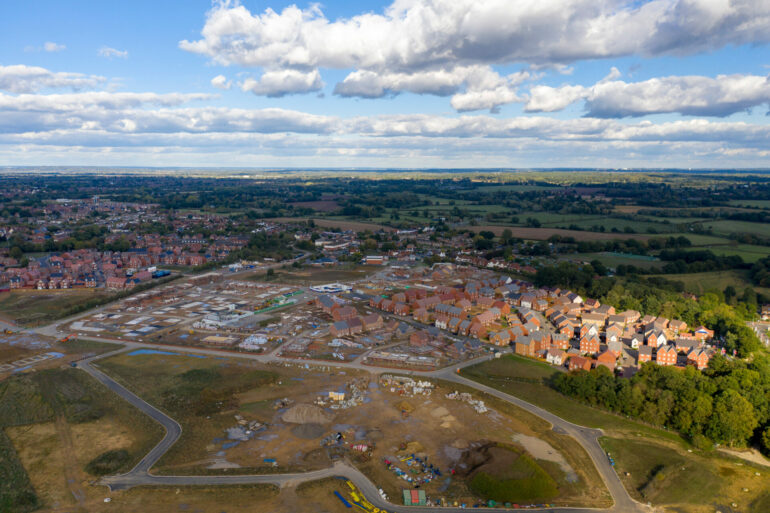UK construction output fell slightly in June, marking the sixth consecutive month of decline, as reduced commercial and civil engineering work outweighed a modest rebound in residential building activity.
The S&P Global UK Construction Purchasing Managers’ Index™ (PMI®) rose to 48.8 in June, up from 47.9 in May, indicating the slowest contraction in overall construction activity since the downturn began in January.
Despite the modest improvement, any reading below 50.0 signals a reduction in activity.
While house building returned to growth for the first time since September 2024, with an index reading of 50.7, the expansion was marginal.
Some firms reported an increase in new projects and sales pipelines. In contrast, commercial construction activity declined at its fastest rate since May 2020, falling to 45.1, as businesses cited subdued economic conditions and cuts to investment spending.
Civil engineering output also continued to weaken, with a reading of 44.2, making it the sector’s worst-performing area.
New orders across the industry dropped for the sixth month running, with the pace of decline quickening from May.
Respondents pointed to fewer tender opportunities, stronger competition for new contracts, and client caution amid broader economic uncertainty.
Employment levels fell in June, continuing a year-long trend. Surveyed companies attributed staff reductions to weaker demand and efforts to control costs.
Purchasing activity also declined, although the decrease was the smallest since January. Supplier performance improved to its highest level in a year, despite some reports of international shipping delays.
Construction firms experienced a sharp rise in input prices during June, particularly for materials like concrete, insulation, and timber.
However, overall cost inflation slowed for the third consecutive month and was the lowest recorded since January.
Business confidence across the sector deteriorated, with just 34% of firms expecting output to rise over the next 12 months and 18% anticipating a decline.
This marks the lowest level of optimism since December 2022. Survey participants cited sluggish sales enquiries and ongoing concerns about the UK economic outlook as key factors weighing on sentiment.
Tim Moore, economics director at S&P Global Market Intelligence, said: “June data highlighted a sustained downturn in UK construction output, albeit at the slowest pace in six months.
“Shrinking workloads in the commercial and civil engineering segments weighed on total industry activity. Commercial activity fell at the sharpest rate in just over five years.
“On a brighter note, house building was the bestperforming area of the construction sector. Higher levels of residential work were recorded for the first time since September 2024 amid some reports of more stable demand conditions.
“The forward-looking survey indicators were weaker than in May. Total new orders fell at a faster pace as many construction companies signalled reduced overall workloads due to unfavourable domestic economic conditions and fragile confidence among clients.”
He added: “At the same time, business activity expectations dipped to a two-and-a-half-year low in June.
“Survey respondents widely cited fewer tender opportunities, rising competition for new work and a projected headwind from subdued business investment during the year ahead.”
Reaction:
Gareth Belsham, director of Bloom Building Consultancy:
“Even the most optimistic of builders would struggle to declare the glass half full.
“Yes the overall contraction in industry workloads continues to ease, and housebuilders even saw output rise in June. That’s the good news.
“But on the other side of the ledger, commercial sector workloads fell sharply, declining at their fastest level since May 2020 – a month when Britain was in the teeth of the Covid pandemic. Infrastructure and civil engineering work contracted even more rapidly.
“But the real cause for alarm is the continued decline in new orders – as they are the key to where the industry goes from here. Builders’ order books have got progressively thinner every single month in 2025 so far, and this is taking a severe toll on construction industry sentiment.
“The PMI survey found that among construction contractors, optimism has fallen to its lowest level since December 2022.
“Those polled reported that fewer projects are coming up for tender, there is intense competition for new work and that staff lay-offs continue.
“As the ultimate bellwether of broader business sentiment, the fall in demand for construction is another economic warning light for the Chancellor to take notice of.
“In this challenging market, the projects that do get greenlit are laser-focused on value and a fully costed business case – there is minimal margin for error.”
Lauren Pamma, head of energy and infrastructure at Aldermore Bank:
“Today’s data shows a sustained downturn as total activity falls for the sixth month running, and business optimism across the sector falls to its weakest level in two and a half years.
“Its clear challenges remain, and persistently high inflation could limit the scope for further interest rate cuts, potentially leading to an uneven recovery across the sector in the coming months.
“Meanwhile, the cross-border tariff negotiations have started to weigh on European supply chains, causing congestion that may linger and drive up costs in the near term.
“However, it’s positive to see housebuilding performing well, with higher levels of residential activity recorded for the first time since September 2024. While the outlook remains uncertain, there are indications of upticks in certain areas.
!The situation continues to evolve daily and SMEs across the sector will be watching developments closely to see how the outlook will change.”




